Dr. Utr. Iur.
Frank
Van den Broeke
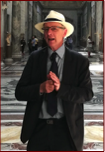
To book an authorised guided tour with me: .... Click here
Wine & Dine: ... Click here
Where to buy your tickets ... ? Click here

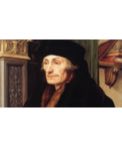

1475 March 6. Born in Caprese.
1481 Death of his mother, Francesca Neri di Miniato del Sera.
Life of Michelangelo
1487 Michelangelo documented in the workshop of Domenico Ghirlandaio.

1492 Death of Lorenzo de'Medici.

1494 Expulsion of the Medici from Florence.
1495-1498 Savonarola creates theocratic state of Florence



Alexander VI - Borgia 1492-1503 Vatican Pinacoteca
1496 First trip to Rome (arrives June 25).
1496-1501 In Rome. Carves the Bacchus and the Rome Pietà.

c. 1503-1505 Completes the Doni Tondo, Taddei Tondo, Pitti Tondo, and Bruges Madonna
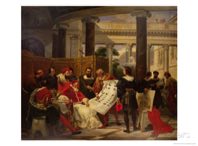
1506 Returns to Florence (April). Michelangelo and Pope Julius II reconcile in Bologna (November) Works on bronze statue Julius II
1505-1545 Michelangelo works on the tomb of Julius II on and off, in both Rome and Florence, carving Moses1505-1545 Michelangelo works on the tomb of Julius II on and off, in both Rome and Florence, carving Moses


1508 Returns to Florence (February). Summoned to Rome by Pope Julius II and asked to paint the ceiling of the Sistine Chapel (May) -31 October 1512
1505 Summoned to Rome by Pope Julius II; commissioned to create the tomb for the pope.

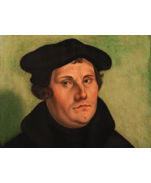
1517 Martin Luther starts his protest(antism)

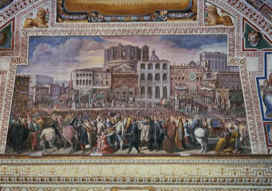
Basilica St Peter under construction-Bramante
Giovanni de'Medici as Pope Leo X: 1513-21

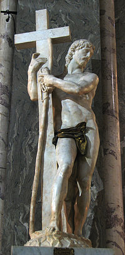
Michelangelo:
- Minerva Christ
- Castel Sant'Angelo
1516 Return to Florence, facade San Lorenzo (cancelled in 1520)
1519: Medici Chapel in Florence

1523-1534 Election of Giulio de'Medici as Pope Clement VII: Michelangelo works in Florence: Laurentian Library

1527 Sack of Rome (May 6). Exile of the Medici from Florence (May 17).
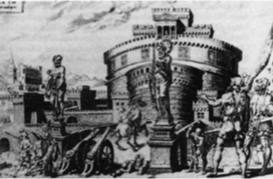
1534-1549 Alessandro Farnese as Pope Paul III. Michelangelo departs Florence, never to return. Medici Madonna and Victory left incomplete in Florentine workshop. Spends remaining thirty years of his life in Rome.
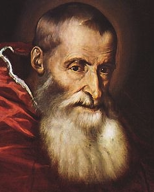
1536-1547 Begins painting the Last Judgment in the Sistine Chapel. Meets Vittoria Colonna.
1538 Begins work on the Capitoline Hill (Campidoglio) (end 1561)


1541 Last Judgment completed and unveiled.

1546 Death of Antonio da Sangallo; Michelangelo appointed chief architect of St. Peter's and the Farnese Palace.
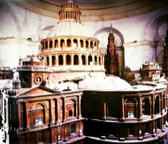
1547 Death of Vittoria Colonna. Begins work on the Florentine Pietà
1550 Publication of the first edition of Giorgio Vasari's Lives of the Painters, Sculptors, and Architects.

1553 Publication of Ascanio Condivi's Life of Michelangelo.
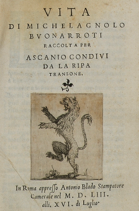
1555 Death of Urbino, Michelangelo's favorite servant/assistant. Begins work on the Rondanini Pietà.
1559-1560 Designs for San Giovanni dei Fiorentini, Rome.

c. 1560 Commission for the Sforza Chapel in Santa Maria Maggiore, Rome.
1561 Commissions for the Porta Pia and Santa Maria degli Angeli in Rome.


1564 February 18. Dies at home in Macel de'Corvi, Rome.


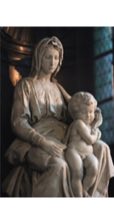
30 yrs.
12 yrs.
7 yrs.
21 yrs.
19 yrs.
17 yrs.
29 yrs.
26 yrs.
24 yrs.
52 yrs.
31 yrs.
48 yrs.
45 yrs.
42 yrs.
37 yrs.
33 yrs.


89 yrs.
59 yrs.
63 yrs.
61 yrs.
71 yrs.
66 yrs.
78 yrs.
75 yrs.
72 yrs.
85 yrs.
80 yrs.
86 yrs.

1520 died Raphael Sanzio di Urbino at 36 yrs.
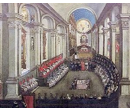
Tridentine Council 1542-1563

1492 Christopher Columbus discovers America
1495 Burning books in Florence
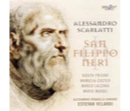
1505Erasmus van Rotterdam

"At that time every day Vasari was with Michelangelo; so, one morning, the Pope granted for kindness to both that, in making the seven churches on horseback, as it was in the Holy Year, receive forgiveness double. And while doing this pilgrimage, between a church and the other, they discussed each other's art, making reasoning beautiful and very useful, that Vasari wrote down in a dialogue. "
Visit of the Seven Churches 1500 with Saint Philip Neri
Michelangelo worked 5 years on the Last Judgement until 1541. Paul III allegedly fell on his knees when he first saw it and exclaimed, “O Lord, charge me not with my sins when you come on the day of Judgment.” The influence of Divine Comedy of Dante Aleghieri is obvious.
That would result 30 yrs. later in the convocation of the Council of Trent. He used his talent and spirituality to push the Church towards the Catholic Reform.
Fore sure, during a "Visit of the Seven Churches" Michelangelo must have met Saint Philip Neri, who was the "softer" Savonarola, with a sense for humor and frugal lifestyle; piety and not harsh condemnation must have impressed Michelangelo.
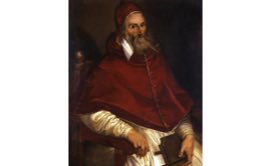
Pius IV 1559-1565

Casino Pius IV in the Vatican Gardens Piro Ligurio
Pius IV came in this oasis of the Casino to meditate with his nephew Saint Charles Borromeo. Together sitting around the oval fountain with cherubs and dolphins. They had their meetings often by night, called the “Vatican Nights”. Often present were saint Philip Neri, saint Charles Borromeo, his nephew Federico and the Pope. Each of them used a nickname: “The Wise, the Choleric one, the Mathematician .... and in this exchange between saints , they prepared the church towards the Light. After the Council, the pope was not anymore God on earth, judging who is going to heaven (by selling indulgencies) or going to hell (excommunication): Only Christ is Judge ! And also the pope needs redemption, confession and christian lifestyle.
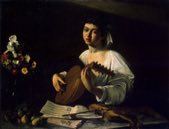
The polyphonic music of Arcadelt, 1507-1565, as here is read by the musician of Caravaggio (who had close contact to the Oratory of Saint Philip Neri - The Deposition - was made for the Chiesa Nuova) was the reply of the Catholic Church against the Protestants: "If each of you can read the bible in its own language, with us, you can sing it in your own voice" and if you like, in your own tongue."
1503 Leonardo (1452-1519) paints Mona Lisa
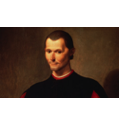
1513 Machiavelli writes "The Prince"

1540 Jesuit Order of Ignatius of Loyola is founded
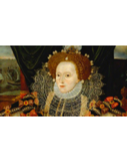
1558 Elisabeth I
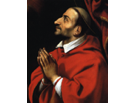
Saint Charles Borromeo (+1564)
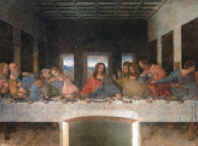
1450 Gutenberg Bible

1536 Paracelsus: The great Surgery book

1453 Fall of Constantinople, end East Roman Empire
Rapidly, Michelangelo's world was changing. The family Medici in Florence had bought the library of Constantinople and the lost science of the ancient world came back to Europe. The Renaissance was born and the Medici built, analogue to Athens, an Accademia.
When he was 13yrs old he was happily living at the court of Lorenzo dé Medici. Meanwhile, in Rome, the scandalous lifestyle of the pope Borgia & his family created an outrage in the christian world. The money of the indulgences was used for the lavish lifestyle of the papal court.
In Florence, a fanatic monk, Savonarola, expelled the Medici and wanted to create a city where God alone should be the King. His zealous to convert to a proper christian lifestyle caused the negation of the Renaissance: Away with those pagan books ... and he burnt books. After that came music instruments. In 1498 the people of Florence had enough of Savonarola and his oracles of the last Judgement, and burned him alive.
Michelangelo had escaped it and was in Rome. As young man he made the statue that made his fame for the rest of his life: The Pietà for the Saint Peter's Basilica. At the same time ......
After the death of Savonarola, Michelangelo returned to Florence. It was a free city again ... but without the Medici. Leonardo da Vinci, 51 yrs. old made his Last Supper and became for many commissions a rival for Michelangelo. And ... Michelangelo was asked by the people of Florence to make his David.
The city was under the treat of being captured by the neighbor powers who looked at it like Goliath, trying to crush it. Michelangelo would seek his whole life the freedom of his native city.
Meanwhile, Alexander VI, pope Borgia died. Julius II, the nephew of Sixtus IV, who built the Sistine Chapel, became pope. He is often called the Terrible Warrior Pope.

Sistine Chapel 1483

in Rome, he must have seen the Sistine Chapel as it was decorated under Sixtus IV in 1483/5. The most famous painters of Umbria and Tuscany (Perugino, Botticelli, Rosselli , Ghirlandaio) had frescoed the walls with the life of Moses and Jesus.
As soon he was on the throne of saint Peter, he summoned Michelangelo to start working on his tomb. That tomb was to be placed in the old St. Peter's Basilica on top of the tomb of St. Peter. Little problem: the old basilica was not big enough for what the pope had in mind. No problem: Julius II ordered Bramante to build a new and bigger one.
That pope understood also that for maintaining the spiritual power over christianity, that he needed also territorial power. The best soldiers for sale were the Swiss, and so, in 1506 the Swiss Guards arrived.
And the pope started the conquest of Italy. The first city was Bologna. Meanwhile, the popes advisers told him that it was a bad omen to build you own tomb when you are still alive. So, Julius II changed his mind and told Michelangelo to stop working on the tomb. Michelangelo would be tormented by it until he was 70 yrs. old when he finally got a deal with the heirs of Julius II about the tomb.

Donato Bramante - Rooms of Raphael
Suddenly, Julius II had an other idea: the cracks in the vault of the Sistine Chapel would be a perfect opportunity to repaint it ... and Michelangelo should do it.
Michelangelo initially refused it, claiming he was no painter. But after the tread of the pope to invade Florence, he came back in Rome in order to paint the vault of the Sistine Chapel.
When he finished the vault, we are 5 years before Martin Luther started his protest. Michelangelo witnessed during his lifetime the end of a united Christendom in Western Europe with the emergence of Protestantism. This affected his faith, and he was increasingly drawn to a more devotional and inward-looking form of Catholicism.
Luther wanted a more authentic Church, modeled on the message of Jesus and not a Church that produced wealth for itself. People like Erasmus, Savonarola and Martin Luther must have influenced the inward-looking Michelangelo. But there are two ways to protest: or you put yourself out of the structure, like Martin Luther, or, you try to reform the Church from inside. Michelangelo choose the latter way.
Four years he would work on the vault. A letter of 1513 shows that he had absolutely a free hand. His work would change the history of Art and gave the Church the first push towards the inner Reform.
After the death of Julius II, Leo X of the Medici family became his successor. "Since God has us given the papacy, let's enjoy it!!", he would say. The money he spent for making his nephew the duke of Urbino, and his lavish lifestyle made the church bankrupt. Selling more indulgences would refinance it. But as second son of Lorenzo the Magnificent de Medici, he had also a keen eye for arts.
The indulgence money served for the further construction of the saint Peter Basilica and his private expenses. In the Nord of Europe, Martin Luther put his Ninety-five Theses on the door of Wittenberg. The new invention of printing made that they were heard all over in a few weeks. In Rome, they underestimated the consequences.
Leo X surrounded him by the best artist. The protégé of Bramante, the architect of the saint Peter's basilica, became the new star of Rome. His name was Raphael Sanctis. Not a difficult character like Michelangelo, but a gentle, amiable man who didn't quarrel with nobody. The frescoes he started under Julius II in the Stanze of the Vatican, were completed. But his extremely prolific life came to an abrupt end by his premature dead in 1520.
He had no relational problems with those who commissioned the works, and neither with the enormous school of pupils that surrounded him.
His style would break with the tradition of his teacher Perugino (idealized Platonic Madonna's) and he would follow the new style (mannerism) of Michelangelo, more Aristotelian/physically real people.
Clemens VII was the next pope and the cousin of Leo X dé Medici. Even he was a skilled diplomat, he didn't see the imminent danger of the protestants and took the wrong allies (France) against the imperial court of the Habsburg's of Germany and Spain.

1521-22 Hadrian VI, dutch pope
A reaction came against the wealth of the Church, and the austere teacher of Charles V became pope under the name Hadrian VI. Gone was all luxury, and pagan statues were locked up in cabinets from which only the pope would have the keys. It lasted only a few months...
An almost total destruction of Rome was the consequence of the Sack of Rome in 1527 by the troops of Charles V. Also his family got exiled from Florence were Michelangelo was at work in their chapel.
Michelangelo, seeing that Florence lost his freedom, returned to Rome for never going back to Florence again. Pope Paul III Farnese was sitting on the chair of saint Peter. A man with many talents, who surrounded himself with scientists like Copernicus and Paracelsus. But he had also vices: he made from nepotism a proper system. With a better control over the finances of the Vatican he could afford that Michelangelo painted his Last Judgement in the Sistine Chapel.
Saint Philip Neri of Florence arrives in Rome
1538 Henry VIII Schism
But something had changed. Outside the church the cry for reform became day after day louder, and while more nations walked away from the pope's authority (see the schism of Henry VIII), also inside the church a reform took place. A movement, not starting from the top, but from the bottom would shake the church in its fundaments and constrained pope Paul III to call together the Council of Trent four years after Michelangelo completed the Sistine Chapel.
The Church underwent a proper change. New movements from the base became very popular: Ignatius of Loyola started the Jesuits in order to do something about the orphans and the education of the clergy; the Barnabites builded schools for the illiterate working class. They had protection of Saint Charles Borromeo and saint Franciscus of Sales.
But the dean of all the new movements was saint Philip Neri, the founder of the Oratory. Until his dead in 1595, he was the confessor of five popes. Born in Florence in 1515, he gathered the whole Florentine community in Rome around him, and in a special way artists: he founded the Oratory. When Martin Luther translated the bible in the vernacular language, he would use popular songs and added a sacred text on them. And each could sing it in its own voice, like reading the bible in your own language. Pier Luigi Palestrina was even his penitent. A Reform from inside the Church was born: a devotional and inward-looking form of Catholicism, like Michelangelo lived. Paul IV looked suspicious also to Michelangelo and wanted the Last Judgement to be painted more modestly, a request that Michelangelo ignored !
Poor ànd rich started to change their lifestyle. And so it was that Michelangelo as old man found finally happiness and comfort in his spiritual friendship with the princess Vittoria Colonna, who in turn sympathized with various coteries of reformers in Rome. Card. Caraffa (later pope Paul IV) made her to leave Rome (in 1541) ... Michelangelo lost his best friend but stayed in touch through beautiful letters.
The frequent visits of Saint Philip Neri in the solitude of the catacombs of saint Sebastian, brought a general revival of the lifestyle of the early christians and Martyrs. One of the last works of Michelangelo was rebuilding the remains of the public baths of Diocletianus in a church dedicated to the angels and martyrs.
A year before his death, in 1563, the Council of Trent concluded its sessions. Michelangelo as artist had for 90 yrs. used his talent as painter, sculptor and architect for creating a better Church. Those who came after him had to conclude it: spiritually and physically (Fontana & Giacomo della Porta would finish the dome that Michelangelo started.)


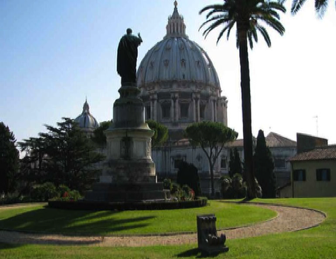
1501 Returns to Florence
1504 Completes the David. Receives commission to paint the Battle of Cascina.


Life of Michelangelo Age His world


Paul IV Caraffa 1555-59 Roman Inquisition; Index:
Not long after the Last Judgement completion, the Council of Trent condemned nudity in religious art, decreeing that “all lasciviousness be avoided; in such wise that figures shall not be painted or adorned with a beauty exciting to lust.” Clement’s successor Pope Pius IV complied with the tenet, and in 1565, the year after Michelangelo’s death, had the more controversial nudity painted over by Daniele da Volterra, earning the artist the nickname Il Braghetonne, “the breeches-maker.” Da Volterra also substantially repainted the figures of Saint Catherine and Saint Blaise, whose positions were considered unseemly. Further coverings were added in the 17th and 18th centuries.

Daniele da Volterra The Breeches Maker
And a year after the death of Michelangelo ....


Michelangelo in Rome
Michelangelo in Florence